We finally left Dutch Harbor shortly after 4pm today. After watching the USCG crew load up the 28 foot skiff up the side, we set out at about 10 knots. What is that converted to miles per hour?
Tug pulling the Healy
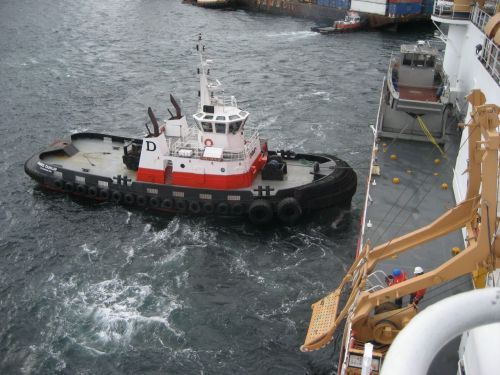 Tug pulling the Healy
Tug pulling the Healy
Tug pulling the Healy away from the docks in Dutch Harbor, Alaska.*
Tug Pulling the Healy
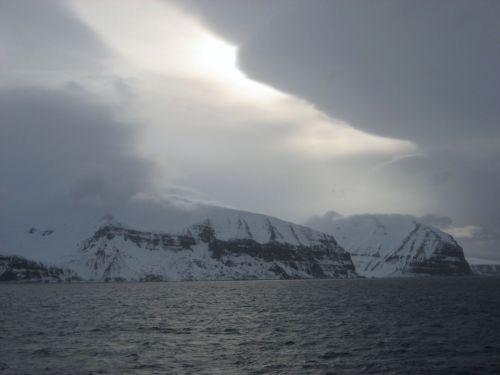 Leaving Land behind
Leaving Land behind
 Leaving Land behind
Leaving Land behind
Coast Guard personnel debriefed the science crew. They reviewed the safety procedures and Coast Guard protocol for those (such as me!) who were unfamiliar with life on a large ship.
The Healy is a remarkable USCG polar icebreaker and research vessel. The Healy is designed to break up over 4 feet of ice continuously at a speed of 3 knots. It can operate in temperatures below -50F. The overall dimensions are 128 meters long and 25 meters wide at the beam maximum. The ship has a maximum fuel capacity of 1,220,915 gallons. The top speed is 17 knots and can travel up to 16,000 nautical miles at 12.5 knots. How many kilometers can it travel if it was measured in kilometers per hour? If the ship has a full fuel tank, how many kilometers could it travel at 15 knots?
It is designed to conduct a wide range of research activities. The vessel can accommodate over 50 scientists providing them with more than 4200 square feet of lab space. There are numerous electronic sensor systems providing scientists with the capability to measure the ocean currents, map the seafloor, and measure other variables.
**Barometer aboard the ship **
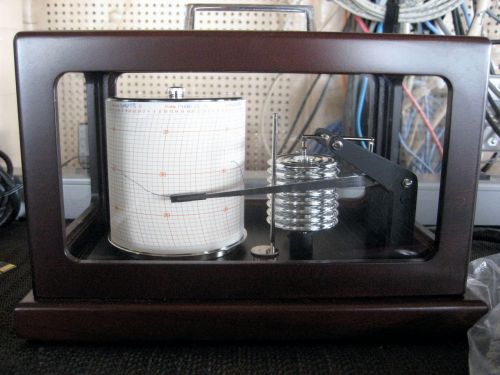 Barometer aboard the ship
Barometer aboard the ship
 Barometer aboard the ship
Barometer aboard the ship
*. A barometer used in measuring atmospheric pressure aboard the Healy.*
The ship is update with all of the latest technology for communications. The oceanographic winches are capable of handling up to 14,000 meters of .25-inch wire. The Healy has five cranes.
An A-frame crane
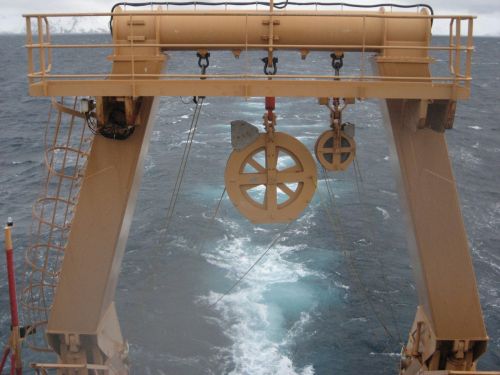 An A-frame crane
An A-frame crane
 An A-frame crane
An A-frame crane
An A-frame crane on the stern of the Healy*
The cranes will be utilized in our studies of benthic or bottom dwelling organisms as the scientists conduct ‘grab' samples. A grab sample will capture the bottom organisms, measuring abundance (number of a species) and richness (total number of species) as well as sediment deposits. The cranes will be used to drop the CTD probes which conductivity, temperature, and depth of the water column. Other measured variables include the salinity (salt content) and other minerals. A complete profile or graph can be made of the variables. The CTD can take numerous water samples in rosette bottles for further processing either onboard or back on a shore side lab.
Additionally, the Healy has a helicopter onboard and three boats on deck. The helicopter is stored in the hanger, and there is a large landing platform or flight deck on the aft of the ship.
The Healy is named after Captain Michael Healy. He was a legendary captain in the late 1800's of the cutters, the Corwin and the Bear. It was in the 1880's, when he became known as ‘Hell Roaring Mike' and the Bear was known as ‘Healy's Fire Canoe'. In the early days of Arctic exploration, science was an important component of the mission. Naturalist John Muir undertook several voyages with Hell Roaring Mike in the 1880's. Healy is best known for his role in introducing Siberian reindeer into NW Alaska to provide food and clothing when the seal and whale populations were in decline.
Hey can I steer?!
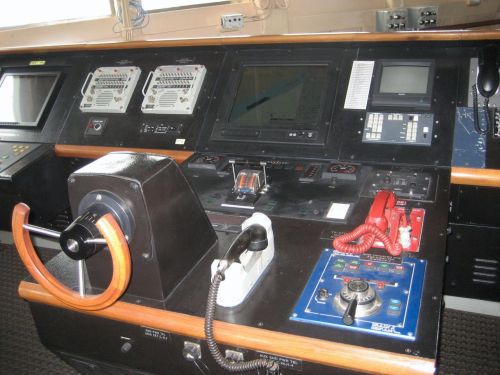 Hey can I steer?!
Hey can I steer?!
One of three control centers in the Healy bridge

